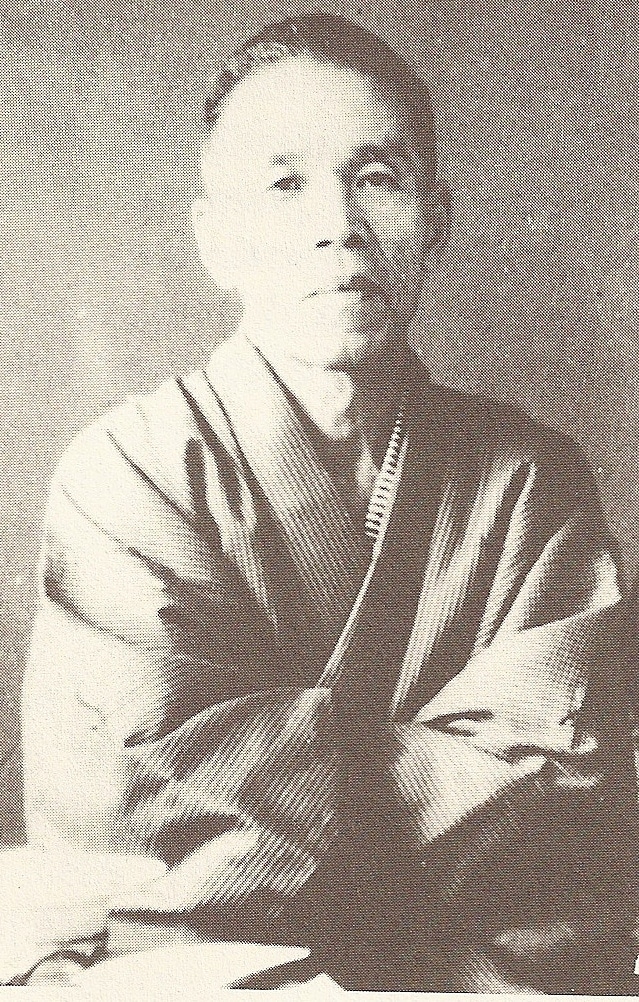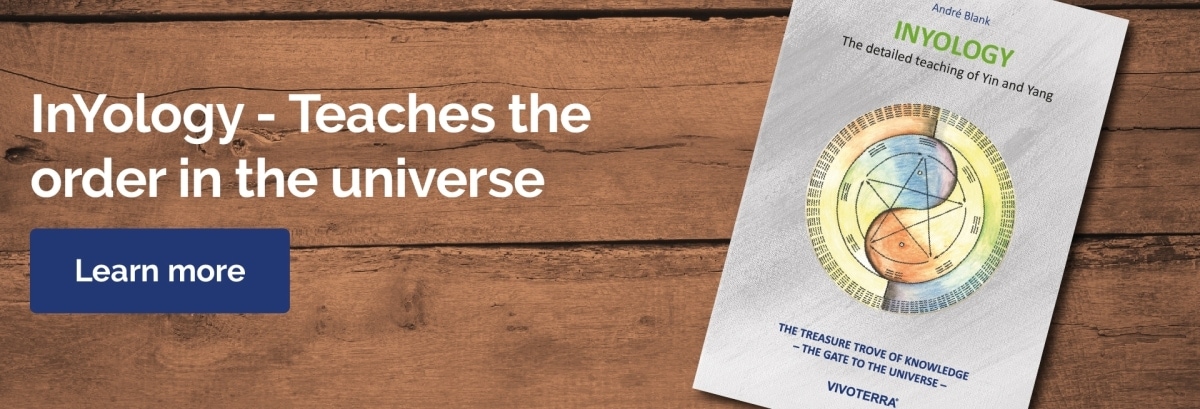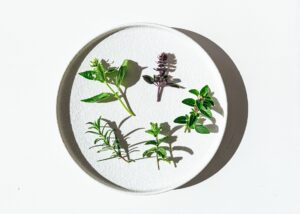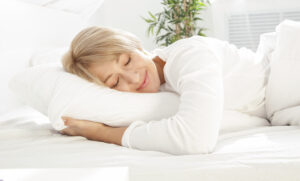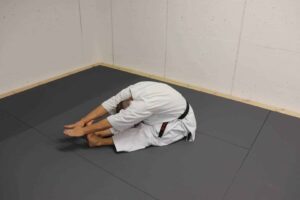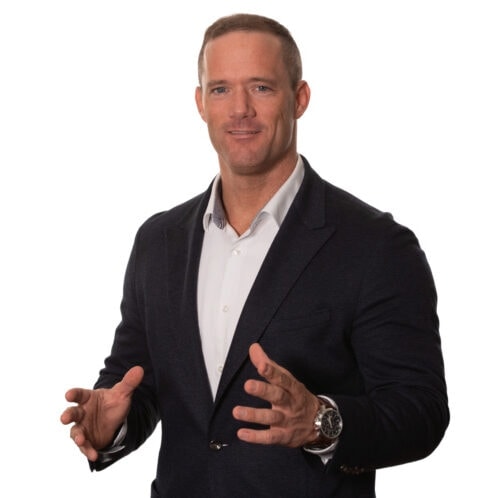Yukikazu (Nyoiti) Sakurazawa (George Ohsawa was later his pseudonym in Europe) was one of the greatest path masters and benefactors of our time. Unfortunately, only very few people really understand it, because his teaching – just like that of Jesus – is a concentrate, and almost no one takes the trouble to dissolve this concentrate deeply enough.
Who is George Ohsawa
Ohsawa was born into a family during the period of the Meiji Restoration whose father was descended from samurai. Ohsawa contacted Sagen Ishizuka (better known as the Sodium / Potassium Doctor) from the Japanese military doctor. They founded the Shoku-yo Kai (“Healing Through Eating”) movement. Ohsawa followed and studied the rules of life and nutrition of the movement from 1913 onwards with Nishibata Manabu, a student of Sagen Ishizuka, in Tokyo. Ohsawa continued his studies in Europe (especially in France), but returned to Japan a few years later to set up a foundation. During World War II he formulated pacifist ideals and relocated his institution to a remote area in the mountains of Yamanashi Prefecture. After 1945, Ohsawa concentrated on spreading his teaching, which he called Macrobiotics or the Single Principle, in Europe and the USA and found many students there.
What does the name Ohsawa mean
After the Second World War, George Ohsawa visited Europe. At this time he also wrote under the names Musagendo Sakurazawa, Nyoiti Sakurazawa and Yukikazu Sakurazawa. During his time in France he used the French first name Georges. It was at this time that he adopted his new name, “Ohsawa,” after the French “oh, ça va,” which means “oh, it goes well.” (M)one interpretation of the pseudonym Ohsawa: O = Gross, Oh = the amplification of O, Sa = Sabi, Wa = Wabi. In this article I write more about the principle of Wabi Sabi. I know another “secret interpretation”. A koan that only the initiated can solve. The written words and the spoken words are to be observed – that is why it is koan – a secret code: Ca va – spoken sa wa = It is alright. Oh, sa wa = Oh, everything is fine as it is. Everything is going as planned. According to the plan of order in the universe.
What is the resume of Yukikazu (Nyoiti) Sakurazawa
- October 1893: Yukikazu Nyoiti Sakurazawa was born in Kyoto, Japan.
- In 1902, his mother died at the age of 30. His father is leaving and he has to take care of his younger brother and sister.
- 1908: He gets tuberculosis in lungs and intestines. He suffers from many disease(s).
- 1912: Through the diet prescribed by Dr. Sagen Ishizuka, he restores his health. He graduated from the First Commercial High School in Kyoto. He gets a job as a messenger at the Takinami Company in Kobe and attends the French school there.
- 1914: He graduates from French school, but loses the job when the company goes out of business because of the start of World War I. He gets a job as steward on the Manei Maru with the Wormth Steamship Co. England. He first came to Europe during the First World War.
- 1915: Employment as administrator at the Nakagari Trading Company, Kobe.
- 1917: At the age of 24, he establishes the Kumasawa Trading Company in Kobe as a branch of the Kumasawa Company of a textile wholesaler. He is elected director. Every other year he travels to Europe. With the publication of the magazine Yomogaeigi he starts a movement to reform the Japanese language.
- 1920: He brings the first working radio receiver from France to Japan. By his own invention he surpasses existing film and photo cameras.
- 1925: At the age of 31, the financiers take control of the company. This incident prompts him to decide to go out of business. He moves to Tokyo and begins his life’s work by uniting the Macrobiotic Association (Shokuyo Kai and the Japanese Language Nippon-Romaji Association).
- 1927: Elected director of the Shokuyo.
- 1928: On Hokkaido he holds the first macrobiotic summer camp. He publishes five volumes of “Macrobiotic Treatise” and a biography of Sagen Ishizuka.
- 1929: Without any financial support, he takes the Trans-Siberian Railway to Paris, and then publishes “The Only Principle” in French.
- 1930: Although he lives a very poor life in Paris, he manages to study at both the Sorbonne University and the Pasteur Institute. To finance his living, he introduces the Asian arts in Europe (France). He first introduces the French to Ido (Far Eastern medicine), Kado (the flower way), acupuncture, aikido, judo, haiku. He publishes the flower book at Hippokrates-Verlag.
- 1935: At the age of 42, he returns to Japan, and advises Generals S. Araki and Y. Lmori not to wage war against the Western powers. Otherwise you would lose this war!
- 1939: He publishes a book entitled “How to Make Enemies in the West”, so much so that it provokes fierce opposition among the military and the ultra-patriots. Under these conditions, he can no longer safely remain in Japan, and so he becomes a health advisor to the imperial family and other nobles in order to escape this threat from the Nationalists. He publishes “A New Dietary Cure,” which is selling in the millions.
- 1940: He establishes the Institute of the Single Principle in Ōtsu, Kyoto, where he teaches the Single Principle instead of how to cure disease(s).
- 1941: In a print run of 100,000 copies he publishes “The World Health Front”, a warning to the leaders of the Japanese government that they would destroy Japan and bring confusion, similar to that during the French Revolution, to the country. He also predicts that they would be shot. Four years later, at the end of the war, his prophecy comes true. However, his warning is so strong that there is a serious risk of murder. He publishes the book “One Who Wins Last and Forever”, in which he predicts that England will abandon India and Gandhi will be assassinated – this prediction comes true five years later. His book “How to make enemies in the West” is confiscated by the government and 2,000 books are burned.
- 1942-1944: He publishes more books. At this time, the pressure from the military government was growing daily. He was interrogated and tortured by the military police for six months. His health is seriously damaged.
- 1944: In July he says again that Japan will be defeated. The following year, Japan surrenders. He sends telegrams to all students who are at the front saying, “You should eat carefully and be the last winners,” with advice on how they should act, in terms of nutrition. He publishes two anti-war and anti-military books. In November, he tries to reach Moscow through Manchuria to offer Russia the role of mediator in World War II. On the way he is followed by the military police and forced to change his plan. However, he escapes captivity and returns to Japan to plan another attempt.
- 1945: On January 25, he is arrested in his hiding place and imprisoned in conditions where the temperature drops to 20°C below zero. After three months with such treatment, he becomes extremely weak, loses 80% of his vision and almost dies. At the end of June he was suddenly released against the agreement not to bring the government to trial. At this time he writes a book urging people to live peacefully, “The Unique Status Named Happiness” (a book that moved me a lot myself, considering the time he wrote it). In July he tried a coup d’état with Generals Limori and Fujimori, but was arrested again at a secret meeting, incarcerated in Kofu and then transferred to Nagasaki prison. Kofu will be completely bombed out after its laying. Japan surrenders in August. In September, on the orders of General Mc Arthur, he was released shortly before his death sentence was carried out. In a letter, he wrote to General Mc Arthur and advised him to reduce the Japanese government’s military and secret police. The advice is being followed and those systems abolished. In October, he publishes a book, “Why Did Japan Fail?”
- 1946: He begins to give seminars in Yokohama on the biological and educational revolution of man.
- 1948: He founded the macrobiotic study house (called Maison Ignoramus) in Hiyoshi, Tokyo. He publishes “The Book of Judo” in French.
- 1949: In various cities he is active for the World Government Movement. His world government movement is based on the idea that world peace is only possible when individuals are able to establish health and happiness in themselves through biological and physiological improvement. (Just to live macrobiotically. In this context I would like to refer to the book “Nagasaki 1945” by Dr. Akizuki, which shows why the people in this hospital in the middle of Nagasaki, survived the atomic bombing…).
- 1950-1953: He meets various renowned scientists, and publishes many more books.
- 1953: He leaves Japan for India to teach macrobiotics to the world. He writes an open letter to Mao Tse Tung advising him from the macrobiotic standpoint, his health and Chinese politics.
- 1955: In June he leaves India and goes to Africa by ship. He is coming to Lambarene, Belgian Congo on October 29th. He starts teaching black macrobiotics.
- 1956: Since January 25, he has been suffering from tropical ulcers, a disease that is almost always fatal. (See the book Cancer and Far Eastern Philosophy). He “cures” (reverses the degenerative course of) this in about ten days with the macrobiotic diet. He advises Dr. Albert Schweizer to accept the macrobiotic diet for his patients. Dr. Schweizer refuses, and then Ohsawa leaves Lambarene. On February 29th he reached Paris, where he had implanted the oriental culture 25 years earlier. He lectures on macrobiotics day and night in Belgium, Switzerland, Germany, Sweden, Italy and England. A “macrobiotic” factory (Lima) is soon established in Belgium, and “macrobiotic” shops and restaurants are opened, all over Europe.
- 1956-1959: Among other things, he publishes various books and holds sesshins.
- 1959: In December of that year he visits the USA for the first time. (Young people didn’t really understand his teachings, and that later gave rise to the hippie and Make-Love-Not-War movements).
- 1959-1963: He holds numerous summer camps and lectures, throughout America and Europe, with Japanese doctors.
- 1963: On August 18, the Herald Tribune carries his prediction that John F. Kennedy would face great danger. That prophecy comes true in November with the death of President Kennedy.
- 1964: Together with his students he succeeds in an experiment with atomic transmutation (Na-K) on July 21, shortly thereafter he gives lectures at the Big Sur summer camp.
- 1965: In Japan he begins to organize a spiritual Olympiad. Several books, including “They Are All Sanpaku,” are published. This year he is giving lectures on a tour that covers 32,000 km in 5 locations in Europe and America.
- 1966: On April 24 at 5:30 p.m., at the age of 73, he leaves this world forever. Doctors diagnose a heart attack as the cause of his death.
The education of the will is his final article. The Spiritual Olympiad he initiated is held in Japan in July and August and is attended by over a hundred macrobiotic people from around the world. I would like to point out here that it is thanks to George Ohsawa that we can practice our karatedo here today. Indeed, it was he who first began the “betrayal” of bringing the secrets of the Far East to Europe and the West! It was he who translated the teaching of Jesus into a language that we can understand again. It was he who introduced the martial arts (true Budo) to the West. All the other masters followed him. The great Zen master Taisen Deshimaru-Roshi also knew him and followed his example. It was Georg Ohsawa who sent Minoru Mochizuki to Sensei Ueshiba to practice Aikido, and it was he who later convinced Sensei Ueshiba to give him Minoru Mochizuki (now 10th Dan Yoseikan) to take with him to Europe to teach Aikido here. It was he who sent his Uchi-Deshi (Michio Kushi, Hermann Aihara, Shizuko Yamamoto) from Japan to spread macrobiotics (I-do, Shokyo-do, Ryori-do, Shiatsu, Do-in etc.) all over the world. The gratitude of all of us cannot be big enough.
What are the main teachings of Master George Ohsawa
- His teachings include in particular: Study before all else, and at all costs, the order of the universe.
- Food is the basis of life, the nature of happiness and health or disease.
- Sodium and potassium are the main opposing and complementary elements in food. They most strongly influence the “Yin-Yang” quality in the organism. The food must be balanced in its content, especially with potassium and sodium.
- The food should be whole, unrefined and natural.
- The food is best when it comes from the region where the person lives.
- To do this, study thoroughly and deeply the extensive teaching of George Ohsawa (and also that of his Uchi-Deshi), which is the basis for this book. George Ohsawa later summarized his teaching under the term “Zen macrobiotics”.
Before Ohsawa began his extensive writing, there were few books in Japan on diet and health. Very few people have really understood all of George Ohsawa’s teaching in depth. Many of his followers (including his opponents) have unfortunately only superficially studied and understood his teachings, and have filtered out of his entire teachings only those parts that they thought were of importance (or just useful for their purposes), and have nevertheless claimed to be masters of macrobiotics. They have subsequently reduced macrobiotics to the “golden calf of vegetarians” or “chörnlipicker”. Many of these supporters have unfortunately brought macrobiotics into disrepute due to their sometimes extreme, arrogant, arrogant and self-righteous way of life. Many of these “macrobiotic vegetarians” often behave like self-righteous eco-terrorists. Somehow understandable that macrobiotics are rejected by a lot of people. Although physical nourishment (food and drink) is very important, it should not become the sole content of life and thought. Keeping the body healthy is the basis of human health, but spiritual nourishment (mental and social concerns) should not be neglected either. Our body also responds to “food” in the form of experiences, relationships, environment, etc. Mind and body are just different manifestations of one and the same universe, and form one unit. We should never forget that the Ohsawa advice is by no means a torturous diet, but a natural, healthy, harmonious and pleasant way of life, for which we can find a way everywhere and in every situation.
What is Shokuyodo
There are different ways to influence our health; for example, the way via nutrition (Shokuyodo), or the way via the mind (Zendo). We can largely choose the food ourselves and therefore it is the easiest and easiest way to bring about change. On the spiritual level, zazen is the most direct but the hardest way. I encourage you to find out more about macrobiotics and Sendo.
Recommendations for a healthy and harmonious lifestyle
- Start every day with a positive attitude
- Accept everything and everyone – even without having to agree to it
- Gratitude and reflection are helpful
- Chew each bite very well (at least 30 to 50 times)
- Stop eating for at least three hours before going to sleep
- Sleep before midnight and get up early for it
- Wear only cotton directly on the skin (including underwear)
- Wear as little jewelry as possible (disrupts energy flow)
- Use good toothpaste to brush your teeth (coconut oil is very well mixed with baking soda)
- Stay in the fresh air a lot, if possible, walk a lot barefoot on natural ground
- Avoid long and hot baths (unless you have too much salt or animal products in your body)
- Occasionally rub the body with hot, damp cloths (until the skin is reddened), but at least the hands and feet, fingers and toes
- If possible, only have objects made of natural materials in the apartment
- Maintain positive, lively contact and gratitude towards parents, children, friends and teachers
- If possible, cook with wood or gas (not electric or even microwave)
- Not too much TV
- Not reading too much, such as newspapers and everyday concerns, etc., but reading literature such as from the teachings of the old masters
- Do not demand perfection from yourself, but neither do you just go down the path of least resistance. Do what is possible, no more and no less
- Practicing zazen and a Far Eastern martial art sensibly and under the guidance of a true master can be helpful
- Always remember: theory without practice is useless
Sensei Aritomo Murashige (9th Dan Aikido) reports:
My sensei had me uncover the writings of Nyoiti Sakurazawa and works of Zen. I studied everything concerning the Yin-Yang applications, Chinese natural medicine, acupuncture, shiatsu, kwatsu, do-in, homeopathy, and the most important: the purifying cuisine of Zen, which Sensei Sakurazawa taught from the point of view of macrobiotics. This way of cooking was really “Do.” It was to eat in accordance with the universe. After I became aware that we are made by QI, that we eat, that we breathe, that we think, so I could hope to effectively affect myself on a physical level (asthma, rash, etc.) and likewise on the spiritual path. I progressively became my own doctor, and was able to take charge of myself. As time went on, I received my Dan degrees, using especially the Eastern methods of “Auto-Diagnostic” (Bo-Shin) taught by Sensei Nyoiti Sakurazawa. Personally, I have been fortunate to be able to consciously experiment with yin-yang in several situations. I made many mistakes in cooking, and made many deviations, which allowed me to find the reason in yin-yang repeatedly. The introduction to Budo begins for me at the age of 13. My first technique is the Kendo, at the age of 19 I go to the Butokuwai of Kyoto, where I trained twice a day, and there I received the 2nd Dan-Kendo. In the spring of my 20 years, I leave Tokyo, then begin the discipline of Judo, not without of course continuing the Kendo. At the age of 23 I am graduated to 3rd Dan-Kendo. At 30, I became 4th Dan-Judo, and was promoted in the art of wielding the lance. At 35 I became 6th Dan-Aikido, and at 45 Kobikwai Aiki awards me 7th Dan-Aikido. At 53 I became 8th Dan-Aikido, and finally at 65 I graduated to 9th Dan-Aikido. I also received 7th Dan-Iaido, 5th Dan-Kendo, 5th Dan-Judo, 3rd Dan-Bojitsu, and other degrees in Kusari-Kama-Jitsu (introduction of the dagger), etc. … It was Sensei Nyoiti Sakurazawa who let me come to Belgium, and I stayed in Ghent to teach aikido and macrobiotics. Before that it was Master Tadashi Abe 4th Dan-Judo who had the responsibility to lead the classes. I was therefore appointed by O-Sensei Morihei Ueshiba, he gave me full authority for Europe, where I have taken up residence in Belgium. The objective of Sensei Nyoiti Sakurazawa (George Ohsawa) is to strive to prove the aspect, the paradox of “non-violence against harmony”, the ideal of “non-destruction” and the protection of all that was praised in nature by Master Ueshiba, and lived by Master Nyoiti Sakurazawa. It is also for this reason that so many ancient masters practiced the budo arts so deeply, because coming from macrobiotics, they knew its other facets. To know about the art of tea, calligraphy and music. I will therefore stay in Brussels to be close to Sensei Nyoiti Sakurazawa and his collaborator and translator Clim Oshimi. These personalities opened the restaurant “the gilded rice” and the “Centre Ignoramus” of Belgium which will become a general quarter. At that time, the teaching of the Yin and the Yang, and the laws of the only law, were intimately related to the teaching of Budo. Students quickly flocked from all over, not forgetting that Sensei Nyoiti Sakurazawa was already known throughout Europe. So Murashige was prompted to move to France, and Maître André Nocquet was also one of his students. So Belgium was a hub as far as Budo was concerned. Many disciplines, such as the Kendo, the Naguinata, the Iaido, the Sado, etc., which were taught by the Master Sakurazawa. (One more proof that it was George Ohsawa who also brought the Budo arts to Europe). By mastering the Eastern knowledge, he was also able to predict the tragic end of Kennedy and of Gandhi. Today, few people remember that he was at the beginning of the introduction in Europe of acupuncture, of the Ikebana, the art of bonsai, zen, the art of tea, and it is also him, the master Taisen Deshimaru in France for zen, and Aritomo Murashige in Belgium for budo. Ohsawa was recognized as the Master of Masters in his day, and sometimes called that. The disappearance (death) of Sensei Nyoiti Sakurazawa has unfortunately had the effect over time that all these disciplines, which he was the first to import into Europe, have currently been amputated in many Western minds from their very last source: “the universal logic of the unique principle”. Sensei Sakurazawa met Sensei Ueshiba around 1950. The two men shared the same quest to create a world of peace and to connect east and west in spiritual research. Few people know that it was indeed Nyoiti Sakurazawa who brought Sensei Murashige Aritomo from Japan to Belgium to teach the UNIQUE PRINCIPLE in the martial arts. Not surprised when O-Sensei Ueshiba stated in June 1964 during an interview in Paris published in the magazine Yin-Yang N°53: “The unique principle and the Do of food first…. Aikido afterwards.”
Ohsawa’s disciple
Sensei Nyoiti Sakurazawa left hundreds of thousands of students in the world, for example Michio Kushi for the United States, Francoise Fluss in the Institut Tenryu of Paris, Jacques Mittler in France, in Belgium R. Yasuhara, in Brussels Clim Yoshimi and many others.
The macrobiotic health food movement
Master Ohsawa gave many of his students different names. After the Second World War – and the prevailing historiography – the Japanese were not welcome guests in the West. He named his second wife Sanae Tanaka Lima. From now on she was called Lima Ohsawa. On the recommendation of Master Ohsawa, Pierre Gevaert decided in 1957 to found a natural food company near Ghent in Belgium – which he named “LIMA” in honour of Master Ohsawa. Today, most people who shop in health food stores are familiar with Lima products such as miso, rice milk, rice cakes, umeboshi, the soy sauces tamari and shoyu, seaweed and many more healthy and delicious products. But very few know the history of this natural food movement.
Sanpaku
Sanpaku (shortened from jap. 三白眼, sanpakugan, engl. “three-white-eyes”)
The Japanese word sanpaku literally means three (san) whites (paku). It refers to a condition in which three white sides can be seen around the iris in the eye.
- Lower sanpaku is the most common type, white on both sides and below the iris – created by expansion (yin). An excess of Yin makes the eyeball bigger, it rolls up because it lies on bones and has to rotate on its axis.
- The upper sanpaku, in which the white is on both sides and above the iris, is triggered by contraction (yang). That is why all newborns (they are Yang) have upper sanpaku. This condition is also often found in violent people.
When we become sanpaku in the usual sense – lower sanpaku – it means that the whole body becomes yin. Sanpaku occurs in proportion to the severity of the disease. The more white there is, the worse the condition of the person concerned. George Ohsawa’s predictions: Master Ohsawa saw a picture of President John F. Kennedy. He said, “This man is in great danger.” People asked Master Ohsawa how he could know. He answered with: “This man is strong Sanpaku (if you want to learn all about Sanpaku, read my book: InYology), he is in great danger.” “Thousands of Americans read my prediction of Kennedy’s death, but no one came to me early to learn how early to change his fate […] What is the reason for this low level of understanding? In the East, everyone has known the meaning of Sanpaku since time immemorial. Only the why has been forgotten […] Everyone is more or less Sanpaku […] They [die Menschen] need to heal themselves before they take care of anything else. Niyoiti Sakurazawa – George Ohsawa.”
What are the most important books by George Ohsawa
Master Ohsawa has published over 300 scriptures. His main works are:
- The miracle of dietetics
- ZEN macrobiotics
- The only principle
- Cancer and Far Eastern Philosophy
- Philosophy in the Nuclear Age
- Life Guide Macrobiotics Manual
- The book of judo
- Jack and Mitie in Occident
Sources and books
INYOLOGY – The detailed teaching of Yin and Yang https://vivoterra-world.com/onlineshop/inyology-the-detailed-teaching-of-yin-and-yang/

